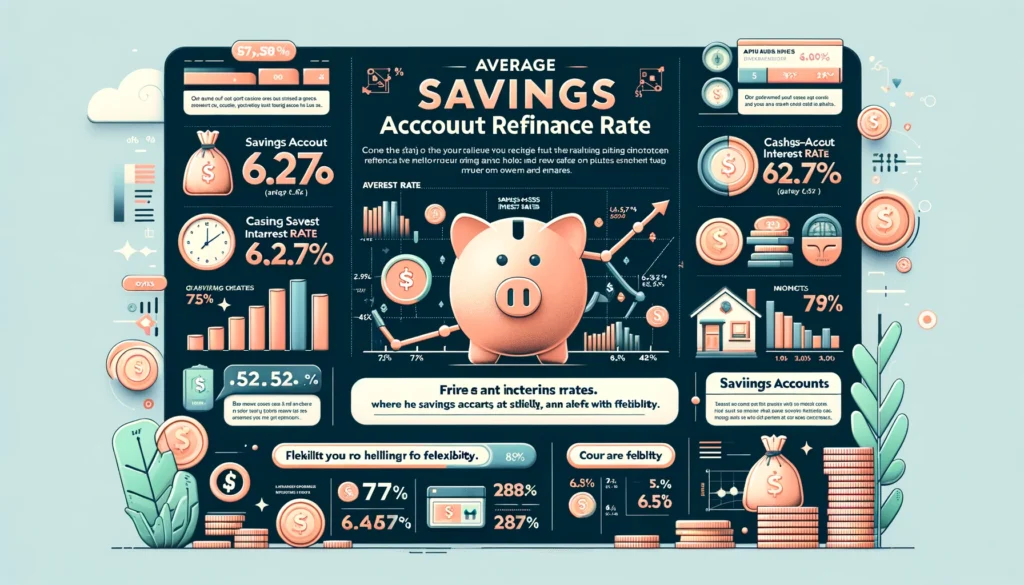House Equity 101: How to Cash Out Quickly and Efficiently

Leveraging house equity can be a strategic move for homeowners looking to capitalize on their property’s value quickly and efficiently. The primary avenues for cashing out include a home equity loan, a home equity line of credit (HELOC), and a cash-out refinance 1. Each option follows a distinct timeline; home equity loans and HELOCs can close in as few as two to four and two to six weeks respectively, while a cash-out refinance may take around 45 to 60 days 1. These processes, essential for accessing house equity, can vary significantly in duration and complexity.
However, the speed at which homeowners can access their house equity is not solely dependent on the type of loan chosen. Factors such as a homeowner’s credit score, debt-to-income (DTI) ratio, and the home’s appraised value can significantly influence the timeline and terms of a loan. For individuals aged 62 and older, a reverse mortgage offers an alternate route to convert house equity into cash, though this option also requires considerable processing time and includes mandatory counseling 1. For those seeking quicker alternatives, personal loans and credit cards present viable options despite their higher interest rates and APRs 1.
Understanding Home Equity

Understanding house equity is crucial for homeowners aiming to leverage their property’s value effectively. Essentially, house equity represents the difference between the current market value of a property and the outstanding mortgage balance 2. This equity can increase over time as homeowners pay down their mortgage or if the property’s value appreciates 2. To determine house equity, one must subtract the mortgage balance from the home’s current market value 2479.
Several strategies can accelerate the growth of home equity, including:
- Making a larger down payment to decrease the initial loan amount 3.
- Paying off the mortgage quicker by making extra payments 3.
- Enhancing the property’s value through strategic renovations 3.
- Opting to stay in the home for a longer period to benefit from market appreciation 3.
Moreover, homeowners have various options to access their equity, such as through home equity loans, home equity lines of credit (HELOC), or cash-out refinancing 68. Each method offers a way to transform this accumulated equity into liquid assets for purposes like buying a new home, consolidating debt, or funding retirement 36.
Home Equity Loan
Home equity loans, often considered a second mortgage, offer homeowners a way to borrow against the equity of their home. These loans provide a lump sum of money upfront, typically allowing borrowing of 80-85% of the home’s appraised value, with a fixed interest rate and regular monthly payments to be made over a set period 513. Unlike HELOCs, which have variable interest rates, home equity loans offer stability with fixed rates, making them an ideal choice if you’re looking for predictable payments 14.
Key aspects of home equity loans include:
- The loan amount is dispersed in one lump sum, facilitating significant one-time expenses such as home renovations, debt consolidation, or major purchases 1024.
- Interest rates and monthly payments are fixed, providing a predictable repayment schedule, which can range from 5 to 30 years, depending on the financial institution and the borrower’s preferences 1024.
- Closing costs, ranging from 2% to 5% of the loan amount, are an essential consideration as they can affect the overall cost of the loan 523.
Home equity loans require at least 20% equity in the home and are subject to a combined loan-to-value ratio of 80% to 90% of the home’s appraised value. The loan amount and interest rate depend significantly on the borrower’s credit score and payment history, making it crucial for borrowers to have a good financial standing 2124.
Home Equity Line of Credit (HELOC)

A Home Equity Line of Credit (HELOC) is a versatile financial tool that allows homeowners to access funds based on their home equity, functioning similarly to a credit card but with the home as collateral 13. With a HELOC, borrowers can draw funds up to a pre-determined limit during the draw period, making it suitable for covering large or recurring expenses, home improvements, or as an emergency fund 1726. The interest rates on HELOCs are typically variable, meaning they can fluctuate over time based on market conditions. As of recent data, HELOC rates average around 6.27%, which is slightly higher than cash-out refinance rates but can offer more flexibility 5.
Key Features of HELOCs:
- Variable Interest Rates: The interest rates for HELOCs are adjustable, often calculated from an index plus a margin, which can change over time 1125.
- Draw and Repayment Periods: HELOCs feature a draw period, usually around 10 years, during which borrowers can access funds as needed. Following this, the repayment period begins, where the borrowed amount plus interest must be repaid 1126.
- Qualification Criteria: To be eligible for a HELOC, borrowers typically need a debt-to-income ratio of 40% or less, a credit score of 620 or higher, and sufficient home equity (at least 15% more than what is owed on the mortgage) 25.
HELOCs offer a flexible way to manage finances, allowing homeowners to borrow against their equity when needed and repay on a schedule that works for them. However, it’s crucial to consider the variable interest rates and the potential risk of foreclosure if payments cannot be made 25.
Cash-Out Refinance
A cash-out refinance offers homeowners the opportunity to tap into their house equity, converting it into cash for various needs. This option involves taking out a new mortgage for more than the existing balance and receiving the difference in cash. The new loan amount hinges on the home’s current value, requiring homeowners to maintain a minimum of 20% equity in their property 2718. Here’s a quick breakdown:
- Eligibility and Loan Amount: Homeowners need to have at least 20% equity in their home, a debt-to-income ratio of 45% or less, and a credit score that meets the lender’s requirements. The maximum loan amount for conventional loans typically caps at 80% of the home’s value 2818.
- Pros and Cons: Benefits include potentially lower interest rates and the flexibility to use the funds for various purposes like home improvements or debt consolidation. However, risks involve higher interest rates, extended debt repayment periods, and the increased risk of foreclosure 18.
- Utilization and Rates: The funds from a cash-out refinance can be employed for an array of purposes, including home renovations, education expenses, or to consolidate high-interest debt. Generally, cash-out refinancing offers lower interest rates compared to credit cards, making it a financially prudent option for accessing large sums of cash 1829.
Evaluating the Best Option for You
When evaluating the best option for cashing out house equity, several factors come into play. Here’s a quick guide to help you make an informed decision:
- Loan-to-Value Ratio: Lenders typically allow borrowing between 80% and 90% of the home’s value for home equity loans and HELOCs 33. This is a critical factor to consider as it directly impacts the amount you can borrow.
- Interest Rates: It’s notable that home equity loans and HELOCs usually have lower interest rates compared to unsecured loans like personal loans or credit cards 33. This makes them an attractive option for borrowers seeking to minimize interest costs over the loan term.
- Closing Costs and Potential Risks:
- Closing costs for cash-out refinancing, home equity loans, and HELOCs generally range from 3% to 6% of the loan’s principal 33. These costs can add up and should be factored into your decision.
- It’s essential to weigh the potential risks such as increasing your debt load, reducing your home equity, and the possibility of losing interest deductions under new tax rules 5.
Before making a decision, consider how you plan to use the cash. Experts recommend investing in home repairs or paying off high-cost debt, as these can add value or reduce financial strain 5. Always consult with a financial advisor to understand the full implications of your choice.
Conclusion
Navigating through the avenues of cashing out house equity, this article has elucidated the nuances of leveraging your home’s value via home equity loans, HELOCs, and cash-out refinancing. Each method offers unique benefits and requirements, from fixed interest rates and predictable repayment schedules of home equity loans to the flexible access of HELOCs and the substantial cash access of cash-out refinancing. The choice among these methods depends significantly on individual financial situations, goals, and the current market conditions, emphasizing the importance of thorough evaluation and strategic planning.
In making an informed decision, homeowners must weigh the potential impacts on their financial health and long-term objectives. It is crucial to consider factors such as loan-to-value ratios, interest rates, closing costs, and the potential risks associated with increasing debt load and reduced home equity. Ultimately, leveraging house equity should be approached with caution and strategic foresight, ensuring it aligns with personal financial goals and market dynamics. Consulting with a financial advisor can further aid in navigating this complex terrain, enabling homeowners to make the most out of their property’s value.
FAQs
What are the top methods for accessing the equity in my home? To access the equity in your home, consider using a home equity loan, a home equity line of credit (HELOC), or cash-out refinancing. These options allow you to obtain funds that you may need for various purposes without having to sell your property or resort to personal loans with higher interest rates.
Which is the most cost-effective option for withdrawing equity from my home? Typically, the most cost-effective method for tapping into your home’s equity is through a home equity line of credit, commonly known as a HELOC.
How should I best utilize the equity from my home? The six most effective uses of home equity include:
- Making home improvements.
- Investing in real estate.
- Covering higher education expenses.
- Paying for medical expenses.
- Consolidating debt.
- Refinancing your current mortgage.
What are the preferred ways to release equity from my home? To release equity from your home, you have two main options:
- Lifetime mortgage: This involves taking out a mortgage on your property, assuming it’s your primary residence, while you continue to own your home.
- Home reversion: This option allows you to sell a part or all of your home to a home reversion provider in exchange for a lump sum or regular payments.




2 Comments